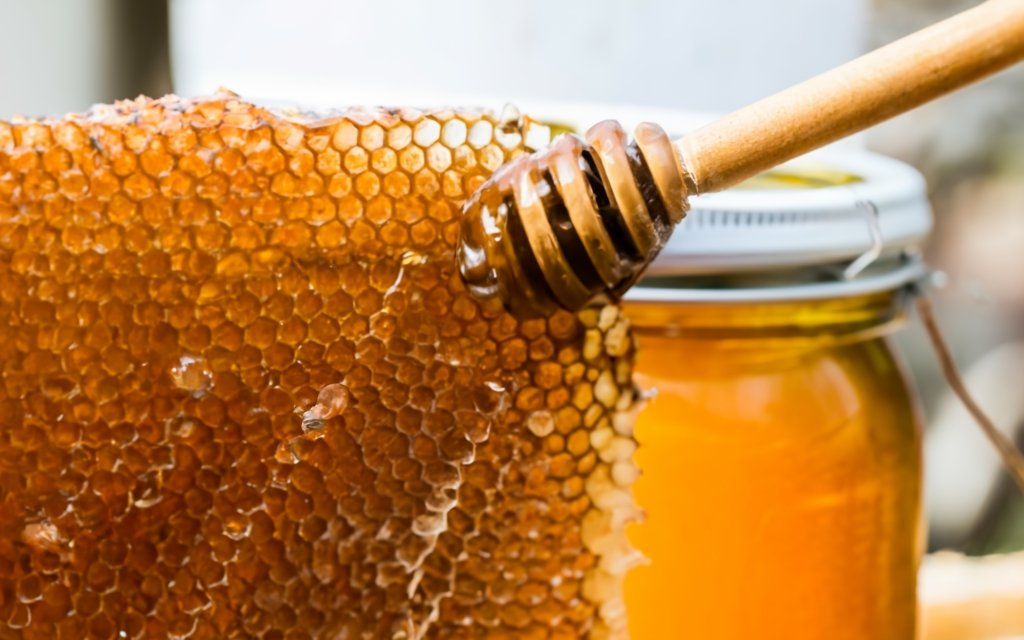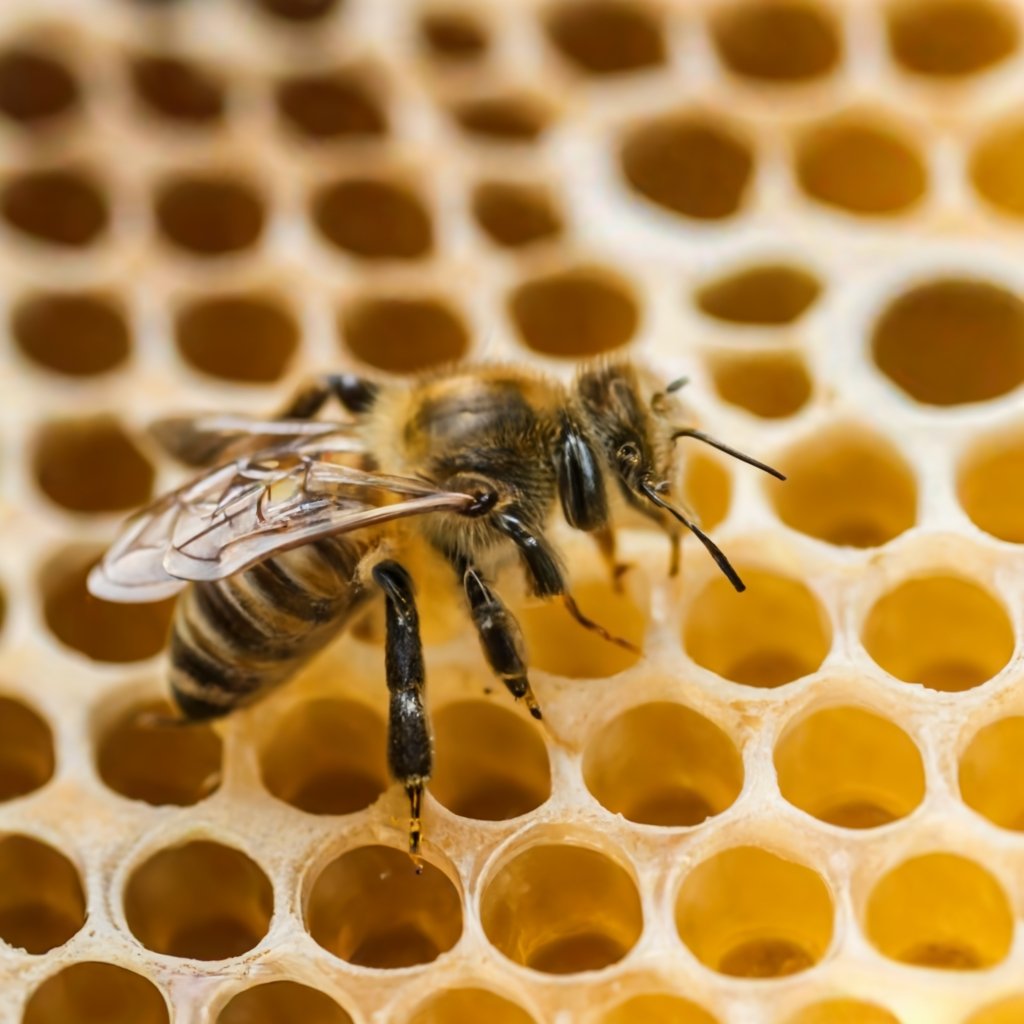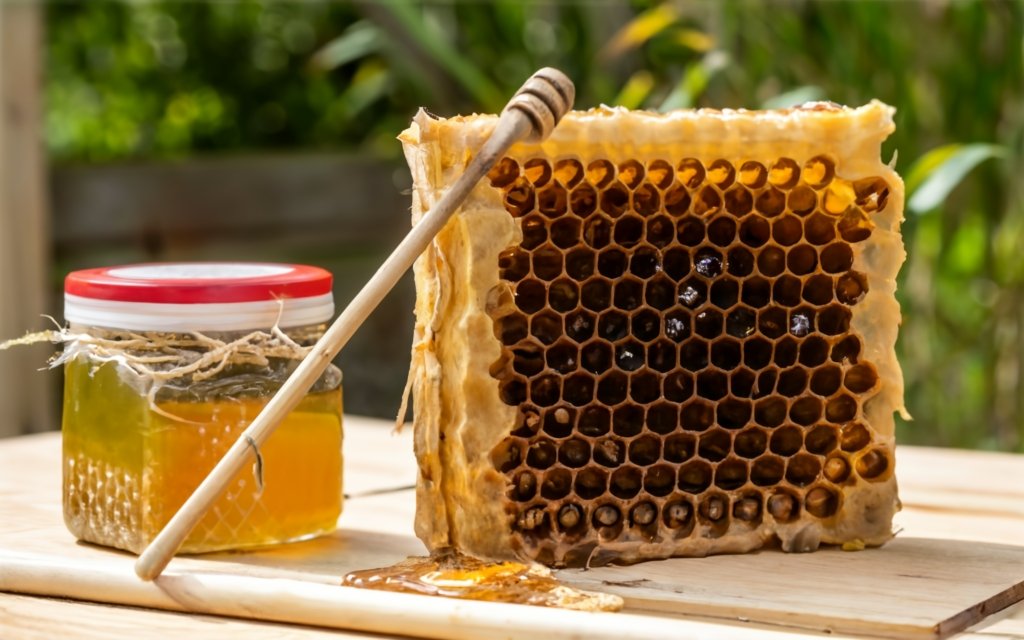Honey Extraction Equipment
Ready to streamline your honey harvesting process? Discover our range of efficient and durable honey extractors – order now and take the first step towards easier, more productive beekeeping!
Key Components and Operation of Honey Extraction Tools
Honey extraction equipment is an essential component of modern beekeeping, facilitating the efficient and safe extraction of honey from the combs while preserving the structure of the honeycomb for future use by the bees. At the heart of this equipment is the honey extractor, a device that uses centrifugal force to draw honey out of the comb. Extractors come in various types, primarily categorized as either manual or electric. Manual extractors, operated by a hand crank, are well-suited for small-scale beekeepers or hobbyists. They are more affordable and easier to maintain but require more physical effort. In contrast, electric extractors, powered by an electric motor, are ideal for larger operations. They expedite the extraction process, minimize labor, and are capable of handling a higher volume of frames, making them a preferred choice for commercial beekeeping.
Beyond the extractor itself, other critical tools play a role in the extraction process. Uncapping tools, like knives (heated or non-heated) and forks, are used to remove the thin layer of wax capping that bees create to seal in the honey. This step is crucial as it opens up the cells, allowing the honey to be spun out. Once extracted, the honey is typically passed through strainers or filters to remove any remaining wax particles and impurities, ensuring the honey is pure and clear. Additionally, honey tanks or containers, often equipped with a honey gate, are used for storing and bottling the harvested honey. The choice of these tools, along with the extractor, depends on various factors such as the scale of beekeeping operations, budget, and personal preference. Proper maintenance and regular cleaning of all these components are essential to ensure the longevity of the equipment and the quality of the honey produced. The entire process not only highlights the technological advancements in beekeeping but also underscores the careful balance beekeepers maintain between efficiency and preserving the natural integrity of honey.
Key Features About Honey Extraction Equipment

Type of Extractor:
- Manual Extractors: Hand-operated, ideal for small-scale beekeepers.
- Electric Extractors: Powered by electricity, suitable for larger operations.

Extractor Design:
- Radial Extractors: Extract from both sides of the frame simultaneously.
- Tangential Extractors: Extract from one side of the frame at a time.

Material Quality:
- Predominantly stainless steel construction for durability and ease of cleaning.

Capacity:
- Varies from small (2-4 frames) to large (20+ frames), depending on beekeeping scale.

Uncapping Equipment:
- Uncapping Knives: Heated or non-heated for wax cap removal.
- Uncapping Forks: For precision work on comb areas unreachable by knives.

Straining Mechanism:
- Built-in filters or separate strainers to remove impurities from extracted honey.

Honey Tanks:
- Storage containers for processed honey, often equipped with a honey gate.

Ease of Cleaning:
- Design features that facilitate easy cleaning and maintenance.

Safety Features:
- Safety mechanisms, especially in electric models, to prevent accidents.

Environmental Considerations:
- Equipment designed to minimize waste and promote sustainable beekeeping.

Portability:
- Smaller models offer portability for field use.

Portability:
- Smaller models offer portability for field use.

Ergonomics:
- User-friendly design for ease of operation, especially in manual models.

Durability and Longevity:
- Construction aimed at long-term use and resistance to wear and tear.

Energy Efficiency:
- For electric models, energy consumption considerations for cost and environmental impact.

Noise Level:
- Important in electric extractors for user comfort.

Compatibility with Hive Types:
- Ability to accommodate different frame sizes from various hive types.
Types of Honey Extraction Equipment
Honey Extractors
Central to honey extraction, these come in various types:
- Manual Extractors: Operated by hand, suitable for small-scale beekeepers.
- Electric Extractors: Powered by electricity, ideal for larger operations.
- Radial Extractors: Extract honey from both sides of the frame simultaneously.
- Tangential Extractors: Extract from one side of the frame at a time.
• Uncapping Tools
Essential for removing the wax caps from honeycombs.
- Uncapping Knives: Can be heated or non-heated, used to slice off the wax caps.
- Uncapping Forks: Useful for uncapping areas that knives can’t reach.
Honey Tanks
- Storage units for holding honey post-extraction, often equipped with a honey gate for bottling.
• Strainers and Filters
Used to purify the honey by removing impurities and wax particles.
Ready to streamline your honey harvesting process? Discover our range of efficient and durable honey extractors – order now and take the first step towards easier, more productive beekeeping!
Usage and Operation
Using honey extraction equipment effectively is crucial for maximizing yield and maintaining the quality of honey:

Preparation: Ensure frames are fully capped with honey and choose an appropriate day for extraction when the temperature is favorable, as honey flows better when warm.

Uncapping: Frames are uncapped using knives or forks, which requires a steady hand and practice to avoid damaging the comb.

Extraction: Frames are placed in the extractor, which spins to use centrifugal force to pull honey out of the comb. The process varies slightly between manual and electric extractors.

Filtering and Bottling: Post-extraction, honey is often filtered to remove any remaining wax bits and then bottled for storage or sale.
Maintenance and Cleaning

Regular Cleaning: After each use, equipment should be thoroughly cleaned with hot water and a mild detergent. Electric extractors need special attention to avoid damaging electrical components.

Storage: Store equipment in a dry, clean environment. Ensure all parts are completely dry before storage to prevent rust or mold.

Seasonal Maintenance: Check for any wear and tear before and after the beekeeping season, and replace or repair parts as necessary.
Considerations for Beekeepers
Learning and Community Engagement
New beekeepers should seek guidance from experienced community members and possibly attend workshops or courses for practical knowledge.
Quality of Equipment
High-quality stainless steel equipment is preferred for its durability and ease of cleaning.
Safety
Safety is crucial, especially when using electric extractors. Protective gear and careful operation are recommended.
Environmental Impact
Consider the environmental impact of beekeeping practices. Sustainable and responsible extraction methods are important for the health of bee populations.
Scale of Operation
The type and size of extraction equipment should match the scale of beekeeping operations. Small-scale beekeepers might prefer manual extractors due to cost and simplicity, while commercial beekeepers benefit more from electric extractors.
Conclusion
Honey extraction is a critical aspect of beekeeping, involving specific techniques and equipment. Understanding the various types of equipment, their operation, and maintenance is essential for successful honey harvesting. Beekeepers should also consider their scale of operation and environmental impact when choosing and using extraction equipment. With the right knowledge and tools, beekeepers can efficiently harvest high-quality honey while maintaining the health of their bee colonies.
HONEY EXTRACTION EQUIPMENT – FAQs
What is a honey extractor?
A honey extractor is a mechanical device used in beekeeping to extract honey from honeycombs without damaging them, using centrifugal force to pull honey out of the cells.
How does a manual honey extractor work?
A manual honey extractor works by spinning honeycombs inside a drum using a hand crank, which forces the honey out of the comb cells through centrifugal force.
What are the benefits of using an electric honey extractor?
An electric honey extractor offers faster and more efficient extraction, reduces manual labor, and is ideal for beekeepers with a larger number of hives.
How do I choose the right size honey extractor?
Choose a honey extractor based on your hive quantity; small-scale beekeepers often use 2-4 frame extractors, while commercial operations may require 20 frames or more.
What is the purpose of an uncapping knife in honey extraction?
An uncapping knife is used to remove the wax cap from honeycomb cells, allowing the honey to be extracted easily in the extractor.
Can I extract honey without an extractor?
Yes, honey can be extracted without an extractor by using methods like gravity straining or crush and strain, but these are more labor-intensive and can damage the comb.
How often should I clean my honey extractor?
Clean your honey extractor after every use to prevent contamination and maintain hygiene, using hot water and a mild detergent or a specialized beekeeping equipment cleaner.
What is the best way to store a honey extractor when not in use?
Store your honey extractor in a clean, dry place, preferably covered to protect it from dust and moisture, and ensure all parts are dry to prevent rust.
How do I know when it's time to extract honey from my hives?
Honey is ready for extraction when the bees have capped most of the comb cells, indicating that the honey is mature and the moisture content is low.
What is the difference between a radial and a tangential honey extractor?
Radial extractors hold frames radially and extract honey from both sides simultaneously, while tangential extractors hold frames against the drum and extract one side at a time.
How can I prevent honey from crystallizing in the extractor?
Prevent crystallization by extracting honey soon after uncapping, keeping the extractor at room temperature, and avoiding prolonged storage of honey in the extractor.
Is it possible to rent a honey extractor?
Yes, some beekeeping associations and supply stores offer honey extractors for rent, which is a cost-effective option for small-scale beekeepers.
What safety precautions should I take when using a honey extractor?
Always follow the manufacturer’s instructions, wear protective gear like gloves, ensure stability of the extractor during use, and keep children and pets away.
How long does honey extraction take?
The time for honey extraction varies based on the extractor type and the amount of honey; manual extractors take longer than electric ones, typically a few hours for a small batch.
Can all types of honey be extracted using a honey extractor?
Most types of honey can be extracted using a honey extractor, except for very thick or crystallized honey, which might require warming or alternative extraction methods.
What is the best way to clean honeycomb frames after extraction?
Clean honeycomb frames by gently scraping off excess wax and propolis, and if necessary, rinse with cold water and let them dry completely before storage.
How do I maintain my honey extractor?
Maintain your honey extractor by cleaning it after each use, lubricating moving parts, checking for any damages, and storing it properly to prevent rust and wear.
What are the environmental considerations in honey extraction?
Environmental considerations include ensuring sustainable beekeeping practices, minimizing waste, and responsibly disposing of or reusing extraction by-products like wax.
How do I prepare my beehives for honey extraction?
Prepare your beehives for extraction by checking for honey maturity, ensuring minimal brood in the frames to be extracted, and using a bee escape or fume board to clear bees from the frames.
What is a honey gate and how is it used?
A honey gate is a valve or tap installed at the bottom of a honey extractor or bucket, used to control the flow of honey when bottling or transferring it.
Can I use a honey extractor for different types of beehives?
Yes, honey extractors can be used for different types of beehives, but ensure the frames fit the extractor, and if not, adapters are available for different frame sizes.
What is the best way to extract honey without destroying the comb?
The best way to extract honey without destroying the comb is to use a gentle centrifugal extractor and ensure the comb is fully capped and sturdy enough to withstand the extraction process.
How does temperature affect honey extraction?
Temperature affects honey extraction as warmer honey flows more easily; hence, extracting in a warm environment or gently warming the frames can facilitate easier extraction.
Are there different types of uncapping tools available?
Yes, there are different types of uncapping tools, including heated and non-heated knives, uncapping forks, and automatic uncappers, each suited to different scales and preferences.
What should I do with the wax cappings removed during extraction?
Wax cappings can be melted down to make beeswax products like candles, cosmetics, or reused in the hives, ensuring they are cleaned and processed properly.





